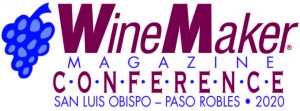For those us of in the northern hemisphere it is time we start getting ready for harvest season!
WineMaker Magazine has a great Harvest Check List in their most recent edition, written by Bob Peak. It is wonderfully detailed and a must read for all our customers. It is an all encompassing check list whereas ours will just scratch the surface. Our checklist reflects only what we do here at our own winery. What you do during your own harvest is up to you.
We always use a checklist to prepare and to ensure we have everything we need for a successful harvest. Our winery, Little Oaks Winery, is a small operation with a limited about of employees and we have found that preparing for harvest is essential for producing award-winning, memorable wines. Our winery is about four to five weeks away from harvest time. It’s time to start preparing.

 By: Rich Sportsman, President (March 27, 2020)
By: Rich Sportsman, President (March 27, 2020) As many of you know, Winemaker Magazine (WMM) is a great source of information and techniques for the serious home winemaker. This weekend many of us planned to attend the annual WMM Conference that was to be held in San Luis Obispo amid one of our favorite wine regions, the California Central Coast. In the interest of public health and safety, the meeting has been postponed. As of this writing, it is to be held next year May 20-23 in the same location. So we’re looking forward to that!
As many of you know, Winemaker Magazine (WMM) is a great source of information and techniques for the serious home winemaker. This weekend many of us planned to attend the annual WMM Conference that was to be held in San Luis Obispo amid one of our favorite wine regions, the California Central Coast. In the interest of public health and safety, the meeting has been postponed. As of this writing, it is to be held next year May 20-23 in the same location. So we’re looking forward to that!


 As many of you know, Vinmetrica shares a warehouse space with our sister company Little Oaks Winery. After years of private winemaking, our president Rich decided it was time to turn his garage operation into a business. We have grown from a one barrel, garage operation to a small winery producing about 350 cases a year.
As many of you know, Vinmetrica shares a warehouse space with our sister company Little Oaks Winery. After years of private winemaking, our president Rich decided it was time to turn his garage operation into a business. We have grown from a one barrel, garage operation to a small winery producing about 350 cases a year.